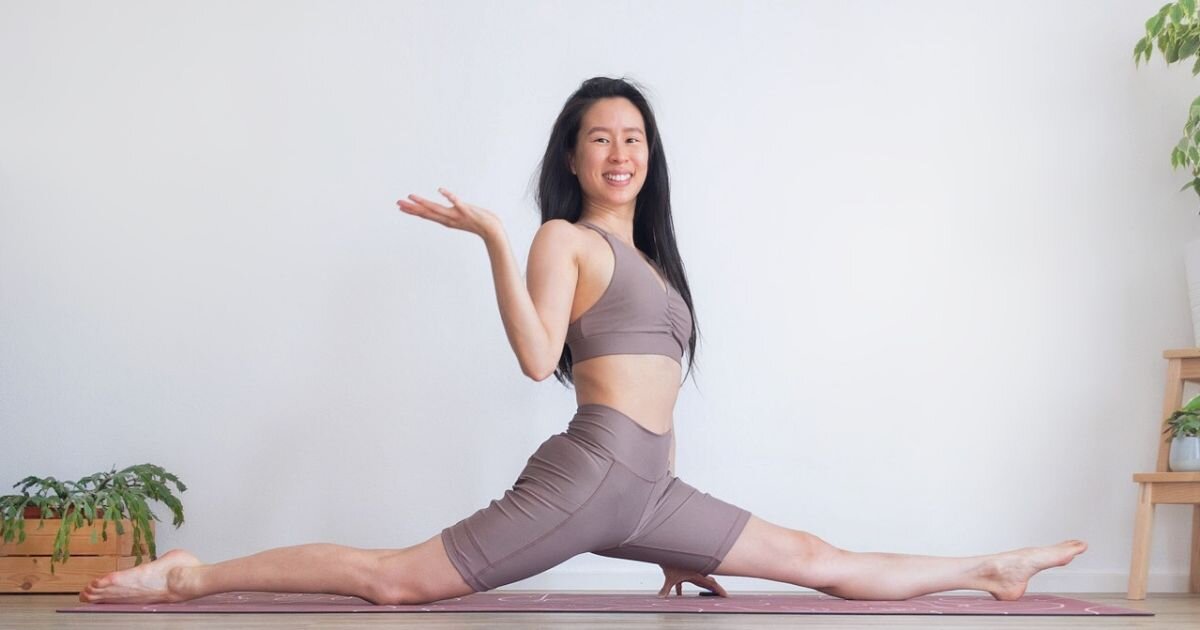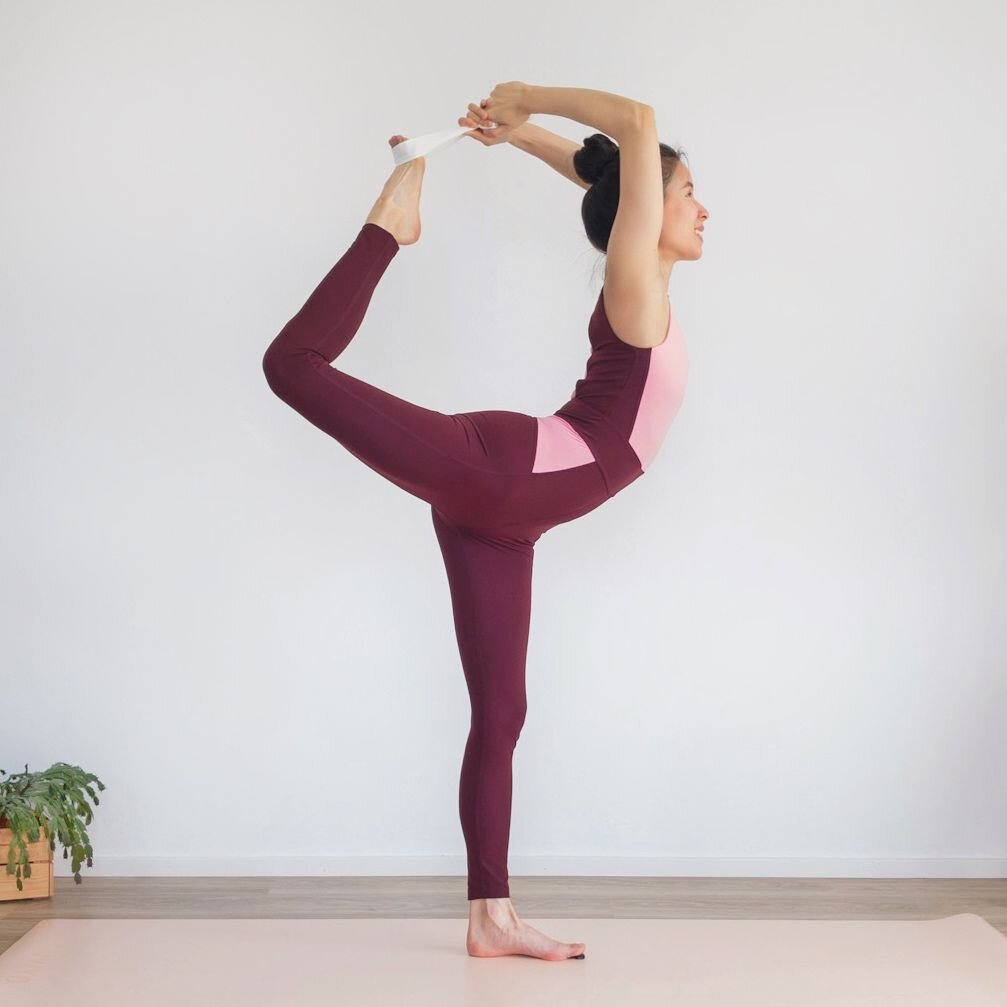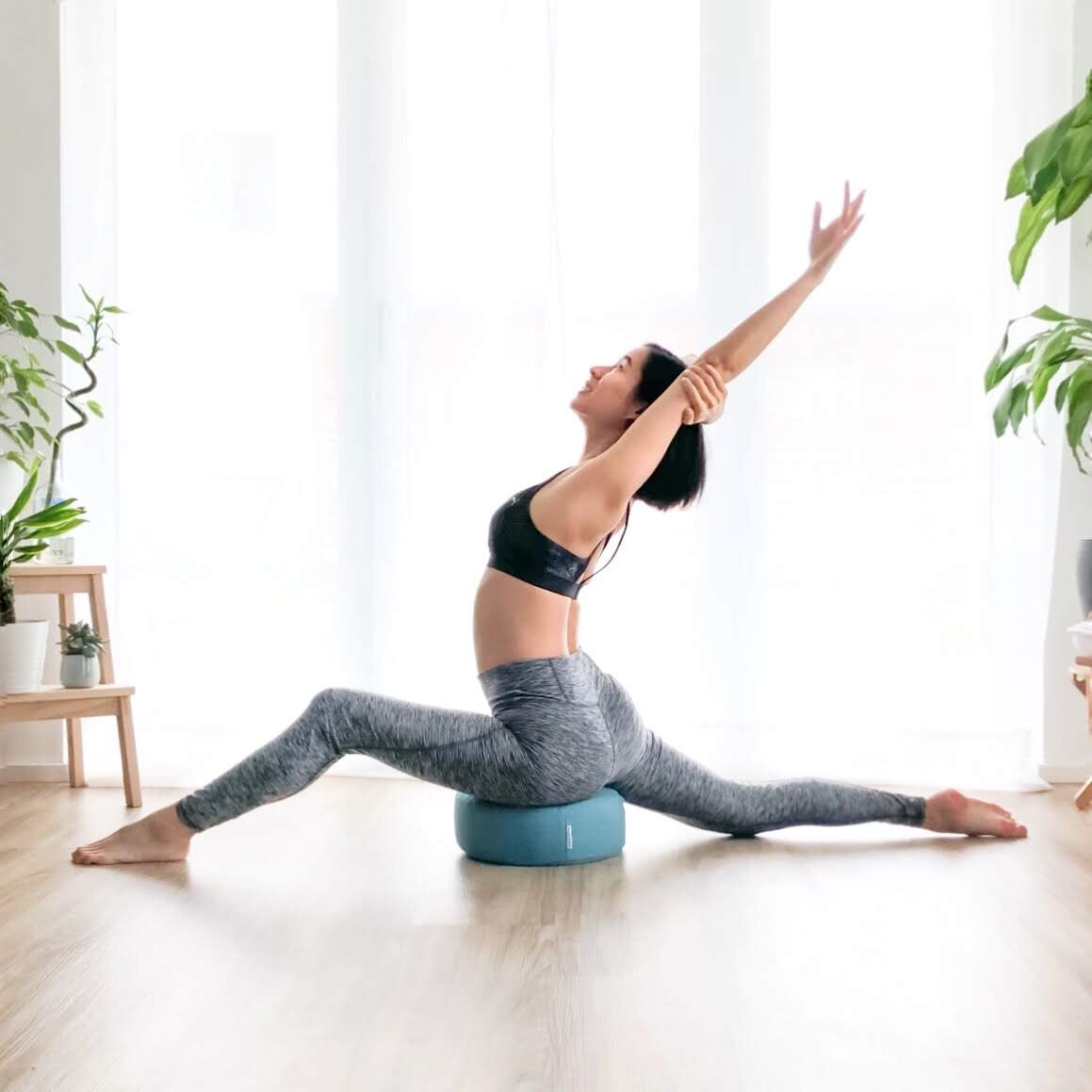Can You Do Yoga If You're Not Flexible?
“I can't do yoga because I'm not flexible". How many times have I heard someone say this? Let me tell you now, you don't have to be flexible to do yoga! Read on to find out why and how to make yoga work for you if you don't feel flexible.
Werbung. This blog post contains a link to my Foundations of Yoga course.
Can you do yoga if you're not flexible? Yes, you absolutely can! Yoga is a practice for every body, no matter your size, age, gender, or level of flexibility. It's a common misconception that you have to be flexible in order to practice yoga. Yoga is what makes you flexible! With a consistent yoga practice, your muscles will loosen, relax, and lengthen, helping you get deeper into the poses, and improving your flexibility.
A little side note: yoga is so much more than just the physical practice or asana as it's called in Sanskrit, and when we refer to flexibility, we are only talking about one small part of the entire yogic philosophy. There are 8 limbs of yoga according to Patanjali (an ancient Indian sage), which also include yamas and niyamas or your social ethics and personal practices, pranayama or breath control, dhyana or meditation, in order to lead you to samadhi, a state of enlightenment and oneness with the universe. So there are many aspects of yoga for you to explore.
HOW TO PRACTICE YOGA IF YOU'RE INFLEXIBLE
It is such a missed opportunity when I hear people are afraid to start yoga because of their perceived inflexibility. So here are a few tips that will help you get into the right mindset.
PROPS ARE YOUR BEST FRIEND
Don't be afraid or embarrassed to use props to support your practice. They are incredibly beneficial to help you deepen a pose and progress along your flexibility journey. Props include blocks, straps, blankets or anything similar you might find lying around your house.
Blocks can help you stabilise and support your weight when you can't reach the floor. For example, you could place a block underneath one hip for Half Pigeon Pose, or use one on either side when practising a lunge or splits.
Straps help you reach your limbs where you otherwise wouldn't be able to. For example, hooking a strap over your foot in Dancer Pose instead of reaching back and grabbing with your hand.
There is no right or wrong way to use props. You can stack them, use them at different heights, or combine them, so get creative and do what works for you.
FIND YOUR AREAS OF TIGHTNESS
Find out which parts of your body you feel stiff. Do you feel an overall tightness, or is it localised in one or more areas? Determining your problem areas can help you be more mindful in your practice and find the right types of poses to do.
Here are some beginner yoga poses to try out based on your area of tightness:
For a stiff spine: Practice poses that move your body in all directions, such as forward folds, twists, side bends and backbends. Some poses to try are Cat and Cow, Seated Forward Fold, Half Lord of the Fishes, Reverse Warrior, and Cobra Pose.
For tight hamstrings: Any type of forward fold will help you gain more flexibility. You can practice both passive and active versions of the poses. For example, in a passive Seated Forward Fold, your legs would be relaxed. In an active Seated Forward Fold, you would engage the muscles in your legs and press the backs of your knees down into the mat. Try also legs together and legs wide versions.
For tight hips: Child's Pose is a great gentle hip opener. You can also practice Half Pigeon Pose, Butterfly Pose and Straddle (though this one is much more intense!). All these poses externally rotate the hip joint, so make sure to include some internal rotation as well, such as lying on your back with your knees bent and soles of your feet on the mat, and allowing the knees to knock together towards the centre of your body.
TRY NOT TO COMPARE
I know, easier said than done, especially when there are so many pictures on social media of yogis doing incredibly bendy poses. But, you don't know their story of how they got there. Everyone has to start somewhere, and it's very likely that they started in the same position as you, and through many years of hard work, got to where they are now.
And yes, some people are born more naturally flexible thanks to their genetics. Some others may have some degree of Joint Hypermobility Syndrome, and others may work consistently for many years and still struggle with their flexibility.
However, yoga is a practice for yourself and no-one else. If you keep comparing yourself to others, you will never feel fulfilled with your own practice. Focus on yourself and practice the poses that make you feel good, and you will see progress!
STAY CONSISTENT
In order to improve your flexibility, you have to keep working at it. If you take a break, your muscles will shorten again. Even for me, if I don't practice a particular type of pose for a while, it takes some time to get back to where I was.
Your practice doesn't have to be long. Aim for at least 5-15 minutes a day, and try to hold each pose for at least 30 seconds. Even better if you hold between 1-3 minutes long.
A general rule is, if you practice every day, the faster you will see progress. If you practice only once a week, it will take longer to reach your goals. But that doesn't mean forcing yourself either. Listen to your body and don't go so hard and fast that you cause yourself an injury.
And remember, progress is not linear. You may feel you took one step forward yesterday and two steps back today, but that's totally normal. There are so many factors that play into how your body feels on any particular time of any day. Find patience with yourself and know that if you put in the hard work, it will pay off.
I hope this article has helped you get over your barrier of starting yoga. Let me know in the comments below where you want to gain flexibility!
Want a little more help with starting yoga?
Kickstart your yoga journey now and transform your life
Join my 10-day Foundations of Yoga course to build up your basics and discover the transformative power of yoga.




